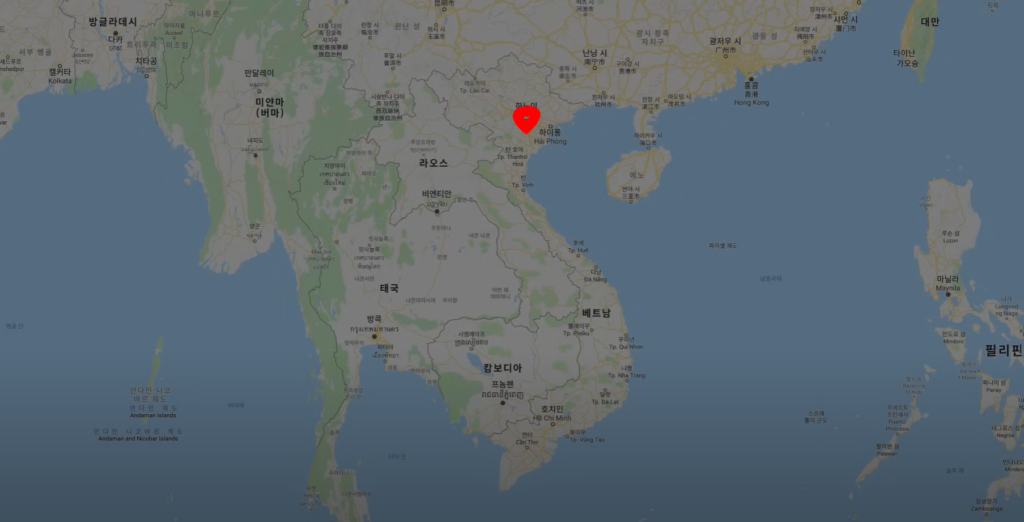Hanoi is the capital and second largest city in northern Vietnam. It serves as the political, historical, and cultural center of the country, though it lags behind Ho Chi Minh City (formerly Saigon) in the south in terms of economic size and development. Despite this, Hanoi is loved by many travelers for its unique landscape with rivers and lakes dotting the city, laid-back atmosphere, and delicious food. Hanoi's name means "many rivers," and you'll see that throughout the city.

Hanoi has a population of about 7.78 million people and an area of 3,329 km², making it about five times the size of Seoul, South Korea. However, that's not just the central city center, but also the suburbs, so the city can feel smaller than it is when you're actually traveling around. The great thing about Hanoi is that the main tourist attractions are clustered in the city center and can be reached on foot, making it easy to get around in a short amount of time. The climate is typical tropical, with average summer temperatures around 30 degrees and average winter temperatures around 20 degrees. However, summers can be hot and humid, making you feel sweltering, and winters are cooler but not dry, making them comfortable. The best time to travel is late fall (10November) to early spring (2March), when the weather is cool and pleasant for sightseeing.
The first gateway to Hanoi is Noi Bai Airport, which is located about 30 kilometers from the city center. To get from the airport to the city, you can take Airport Bus 86 for an inexpensive way to get around. It costs around VND35,000 ($1,750), takes about an hour, and requires cash payment. Alternatively, you can take a pre-booked taxi for around $15 ($17), which is a more convenient way to get to your destination. The airport itself doesn't have many facilities, so it's recommended to head straight to the city rather than linger at the airport.
The centerpiece of any trip to Hanoi is undoubtedly the Old Quarter, a place brimming with tradition and life, where Dong Xuan Market is the city's equivalent of Dongdaemun Market. There's a culture of bargaining that's unique to traditional markets, and you'll find everything from fruit to clothing to sundries. The streets surrounding the market are filled with traditional stalls and are great to browse, but be careful what you buy. Tahien Beer Street in the Old Quarter comes alive in the evenings. You can experience the loud nightlife that is typical of Southeast Asia, but Hanoi's character is revealed when it quiets down around midnight.
At the heart of the Old Quarter is Hoan Kiem Lake. It's a key tourist destination in Hanoi, with the Old Quarter and French Quarter surrounding the lake. On weekends, the streets are closed to cars and become pedestrianized, making it a popular stroll for locals and tourists alike. The French Quarter is a remnant of the French colonial era and is home to luxury hotels, an opera house, fine restaurants, and shopping malls. If you're looking for a luxury experience in Hanoi, this is the place to be. Hoan Kiem Lake and its surroundings account for about 80% of Hanoi's tourism, and it's no exaggeration to say that it's a big part of most itineraries.
Another indispensable part of traveling to Hanoi is a massage. Massage parlors are located all over Hanoi and are loved by travelers for their low prices and high quality. An aromatic full body massage usually costs around 400,000 dong (12,000 won) for 60 minutes, or around 25,000 won with a tip. It's best to stick to tried-and-true massage parlors, especially Midori Spa, which is often frequented by Koreans, as the prices are more psychologically comfortable with tips included.
A trip to Hanoi is not complete without a tour of the city and its suburbs, most notably Halong Bay and Sa Pa. Halong Bay is a UNESCO World Heritage Site with numerous islands floating in the sea, about 3.5 hours from Hanoi. You can take a day trip or an overnight tour, and you'll be amazed by the natural grandeur. Sapa is an alpine town about 5-6 hours from Hanoi, characterized by a cool climate even in summer and beautiful mountain scenery. It's best visited on a tour, and we recommend planning a minimum of two days and three nights.
Most sightseeing in Hanoi can be done in two to three days. We recommend spending the first day exploring Hoan Kiem Lake and the Old Quarter, and the second day exploring the main attractions like Ho Chi Minh's Mausoleum, the Mausoleum of the Moon, and West Lake. If you have a longer itinerary, you can add on a tour of Halong Bay and Sa Pa to get the most out of Hanoi and its surroundings. Hanoi is a fascinating city that can be explored in a short amount of time, so use this guide to help you make the most of your trip.
